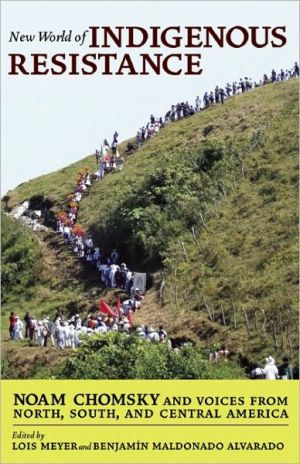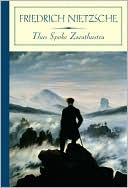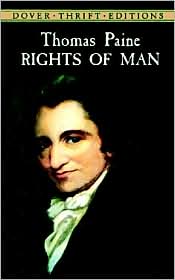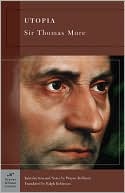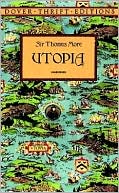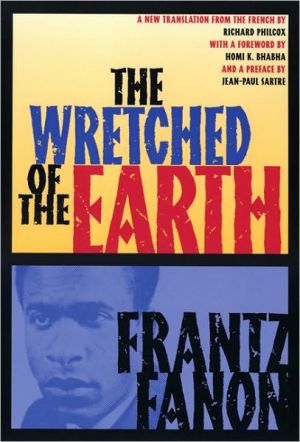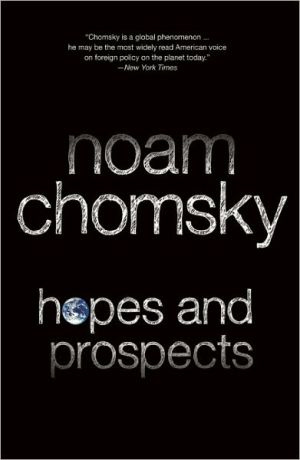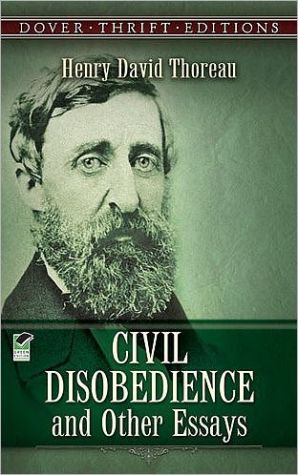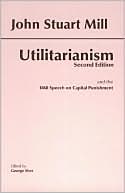New World of Indigenous Resistance
Indigenous societies today face difficult choices: can they develop, modernize, and advance without endangering their sacred traditions and communal identity? Specifically, can their communities benefit from national education while resisting the tendency of state-imposed programs to undermine their cultural sovereignty, language, and traditions? According to Lois Meyer and Benjamín Maldonado, these are among the core questions being raised by indigenous societies whose comunalidad—or...
Search in google:
Interviews with Chomsky accompanied by commentaries by indigenous organizers on globalization and resistance in the Americas. Green Left "[New World of Indigenous Resistance] bills itself as a `virtual hemispheric' conversation" and claims to be the first book of its kind. It is certainly an eye-opener. . . .a book that could change the way its readers think about education forever."--(Matt Ward)
Introduction\ A Hemispheric Conversation among Equals\ By Lois Meyer\ Applied linguist, associate professor in the Department of Language, Literacy & Sociocultural Studies at the University of New Mexico in Albuquerque, U.S.A., and close collaborator with the Coalition of Indigenous Teachers and Promoters of Oaxaca (CMPIO). Email: lsmeyer@unm.edu\ this book includes three interviews with Noam Chomsky about indigenous resistance to globalization and cultural homogenization in the American hemisphere, but it offers even more than that. Gathered here for the first time in virtual conversation with the preeminent linguist and critical analyst of American foreign policy are voices from the indigenous Americas (South, Central and North), who speak to, with, and at times against, Chomsky's views. To our knowledge, this book is the first of its kind. It moves beyond interviews where Noam Chomsky's voice predominates, into a more textured and nuanced intellectual and political exchange in which Chomsky dialogues with more than twenty voices from the New World of indigenous resistance. We are deeply grateful to Dr. Chomsky for granting this series of interviews and especially appreciative that he opened his thoughts to analysis and comment by renowned activists, educators and scholars from the indigenous Americas. Together these voices participate in an unusual, and long overdue, hemispheric conversation among equals.\ The perspective on equality and expertise that motivates the title of this chapter and the selection of participants in this conversation deserves comment. All of our commentators chose to join this hemispheric conversation not because of close personal or professional ties with Benjamín Maldonado or myself (many of them we have yet to meet personally), but because of their respect for Noam Chomsky and their desire to dialogue with him through text. Obvious differences exist among the commentators in terms of their participation in intellectual, educational, and political resistance efforts and movements in their local, regional, national, or international spheres of influence. Some of their commentaries on Chomsky's interviews include scholarly footnotes and bibliographic citations, while others narrate autobiographical accounts of oppression and resistance in specific communities or throughout their personal life histories. Both of these are important and valid paths to expertise, although they are differentially valued in Western and indigenous thought.\ The commentators in this volume were selected to reflect and honor both scholarship and direct action as equal and necessary paths to wisdom. According to Grimaldo Rengifo Vásquez (this volume), "In local indigenous thinking, living is what gives knowledge, not gathering up a lot of a priori facts about the nature of things. As they say, 'To know, you have to live.'" While many of the commentators recognize Western knowledge to be important and strategically necessary for indigenous communities, they decry the relentless academic bias in Western thought and the consequences this bias has wreaked on oral indigenous cultures, alienating indigenous education from culturally authentic ways of learning, knowing, and remembering. Commentators in this volume emphasize that authentic ways of learning, in life and through communal action, are holistic, ecological, spiritual, and healing. It is this very form of learning and knowing that the indigenous movement seeks to revitalize, value, honor, and embed into schools and other sites of learning, not only for the benefit of their own children, but for the healing of the entire world.\ We refer to this as a hemispheric conversation, for geographically the participants span the American continents, both North and South. We acknowledge, however, that the topics addressed here range beyond the so-called New World, encompassing profound struggles over political, economic, social, and educational power and ideology worldwide. The analyses in this volume dissect the yawning ideological divide between the communal priorities and practices of indigenous peoples throughout the Americas, and the priorities, practices, and power of global corporate capitalism, whose centers lie both in and beyond our geographic hemisphere. All of the contributing voices here come from the "New World" of indigenous resistance in the Americas, where they contest the hegemonic state policies and capitalist values emanating from Bogota, Rio de Janeiro, Lima and Mexico City, as well as from Washington, D.C., London, or Tokyo.\ In this introduction and in many of the commentaries to follow, as well as in Noam Chomsky's interviews, this ideological divide is described in shorthand as the struggle between "Western" power and ideology and indigenous communalism, often termed the "Other." Given our complex hemispheric context, what do we mean by "Western"? We do not use this term to refer to a geographic direction on a compass or map, nor do we wish to reinforce the U.S. geographer's biased perspective where "West" implies a contrast with "Middle East" or "Far East," as if all physical directions were universally marked from a territorial center within this dominant world power. In today's convoluted and interconnected planetary geography, "Western" ideology permeates the farthest reaches of the global north, south, east, and west. Indigenous communalism, often slighted as the "Other," coexists with and resists "Western" domination inside the boundaries of virtually all nation-states of the Americas, which have been inhabited for centuries by non-Western cultures and communities. Our use of the term "Western" refers to the hegemonic values, beliefs, and policies which undergird global neoliberal capitalism. While these developed first in Europe and the United States, they now pervade elite classes and power structures worldwide. There is no place in our hemisphere (understood here in contrast to Europe, Africa, or the Asian-Pacific region) where indigenous resistance to Western domination and in defense of communal practices and priorities does not have its history and impact.\ Our commentators denounce the marginalization, exclusion, and repression of indigenous peoples as it is evidenced in references to the "Other." When any alternative ideology and lifeway can be dismissed by those in power as the "Other," Western ideological hegemony flaunts its linguistic and conceptual impunity. Interestingly, this dismissive terminology has been taken up as a strategy of indigenous struggle—the Zapatista National Liberation Army in Mexico has declared its struggle of resistance to be the "Other Campaign" and its educational vision to be the "Other Education." We celebrate their defiance by featuring a photo from the "Other Campaign" on our cover.\ As will be seen, "hemisphere," "Western," and the "Other" are only three of several terms whose meanings will be clarified and also complexified in the course of the multivoiced conversation documented here.\ THE FIRST CHOMSKY INTERVIEW\ As with any conversation of substance and significance, this one has a history. The first interview with Noam Chomsky took place in February 2004. At that time, Benjamín Maldonado and I were collaborating with others in Oaxaca, Mexico, on a book of case studies detailing innovative educational experiences in contemporary indigenous Oaxaca.1 Each case study was followed by comments by both a prominent Mexican researcher and an international researcher. The book additionally included essays by Mexican and international figures. The book's goal was to document creative and ground-breaking educational projects in Oaxaca that walk the fine line between national education standards and communal ways of life—known in Oaxaca as comunalidad2—and to introduce these Oaxacan experiences into the international literature concerning educational globalization and communal resistance. Given the international focus of that earlier volume, I asked the Oaxacans which international figure they would most want to have as a contributing essayist. Their response was immediate and overwhelming—Noam Chomsky.\ Their choice astonished me, for it reached far beyond my expectations. Still, I could not disappoint my Oaxacan colleagues, many of whom were taking great risks as participants in projects affiliated with or even dependent upon the educational bureaucracy by permitting us to publish in our book revealing accounts of their communal commitments and struggles. The responsibility fell to me as the only English speaker to communicate with Noam Chomsky and invite his participation. We had no idea whether he would even consider our invitation.\ He responded immediately and agreed to participate through the format of an interview. On February 20, 2004, Noam made room in his intense schedule for our first conversation. Once transcribed and translated into Spanish, it was published in our book, then later reprinted in a Oaxacan education journal.3 Now, for the first time, the interview appears in English in this volume.\ Several major themes that reoccur throughout the present book are introduced in this first interview; they are then expanded, detailed further, and clarified in the second and third conversations. These themes include the brutal process of nation-state formation and its consequences: neoliberal economic policies, suppression of cultural and linguistic diversity, educational standardization, indigenous resistance, and also hope for the preservation and viability of communal ways of life.\ In order to understand cultural suppression and indigenous resistance, Chomsky contends, one must understand the "very brutal, harsh process of driving people into homogenous national states" to serve the political and economic interests of imperial powers. Spread around the world by colonizing powers, this process of nation-state formation is centuries old, involving suppression, homogenization, and control, which "are the leading themes of state policy in the powerful countries," especially today in the United States. Britain and the United States gained their world dominance by employing protectionist strategies in their own national interest, the same strategies which capitalist financial entities such as the World Bank, the International Monetary Fund, and the World Trade Organization deny to developing countries today. In this view, successful competing models (Chomsky's example is Cuba) must be stopped and dismantled. As he says, "[s]uccessful models, what is called by the rulers 'successful defiance,'—meaning independent efforts of independent action—are very frightening. And efforts to stamp them out take all sorts of forms, violent forms like military coups, or less violent forms like educational homogenization."\ Very early in this interview, Chomsky identified the role that educational homogenization plays in the destructive, worldwide process of state formation and its relentless defense. "State formation, by force mostly, has tried to impose national education standards in order to turn people into similar individuals." Educational standardization aims to level not only diverse cultures, but people, as well. "The educational system is intended to level people, make them passive, disciplined, obedient." Alternative educational efforts that seek to break this regimented mold in order to celebrate creativity and support cultural and linguistic diversity and communal ways, efforts such as bilingual or intercultural education, must be fiercely opposed and dismantled, or co-opted.\ Still, Chomsky asserts, the process of cultural homogenization has been resisted throughout history. He names many examples, such as Spain, Wales, Bolivia, Mexico, and areas of Europe experiencing cultural revival which he calls the "Europe of the regions." In all these places, sustained popular resistance is now showing notable success: "In many respects you cannot undo history, but things are going back to something like the structure that existed before the violent process of state formation was created."\ How can indigenous and minoritized communities4 resist, when the homogenizing pressures are so pervasive, and the power of communities to define their own paths is manipulated and constrained by systems and powers beyond their control? There is no formula, Chomsky reiterates over and over. "It depends on the nature of the community, how integrated they are, how committed they are to retaining their own identity, what kinds of external pressures they are under, straight economic issues."\ Significantly, Chomsky in this interview expresses what might be called "sober hope" for the future of communal ways of life in our increasingly standardized, homogenized, globalized world. Examples abound, he says, wherever there is courage and commitment: the Landless Workers Movement in Brazil, the efforts of Via Campesina to designate seeds as a basic human right and part of the patrimony of humanity;5 the beginnings of native seed banks in rural schools of Oaxaca, and many others. These communal efforts in defiance of homogenization and in defense of comunalidad are important and impressive, but they must join together in solidarity in order to magnify their impact on the centers of power. Chomsky stresses that their power lies in international solidarity. "The opportunities for success are, I think, greater now than they have been in the past because this is the first time, ever, that there has been an international movement of solidarity on these issues. I mean, it is not yet powerful enough to change the basic institutions, but it exists."\ THE SECOND CHOMSKY INTERVIEW\ Initially, a second interview with Noam Chomsky was not contemplated, and three years passed before it would occur in October 2007. During these years, Oaxaca experienced heightened political and educational tensions, as well as economic and agricultural crises exacerbated by the North American Free Trade Agreement (NAFTA). Rural regions were depopulated by widespread migration to urban centers, northern Mexican states, and to the United States, where laborers bartered their labor for basic survival. In May 2006, the state teachers' union of Oaxaca, Section 22 of the National Union of Educational Workers, demanded attention to its list of educational, social, and political grievances. When negotiations with the state of Oaxaca broke down, 70,000 teachers went on strike, occupying fifty square blocks of the center of the capital city, also called Oaxaca, in a massive encampment.\ Before dawn on June 14, 2006, civic unrest exploded into armed conflict as state police, by order of Oaxaca's governor, Ulises Ruíz Ortiz, moved with guns, attack dogs, helicopters and tear gas against the sleeping teachers. Within days, the Popular Assembly of the Peoples of Oaxaca (APPO) formed, demanded removal of the governor, and declared itself to be the de facto governing body of Oaxaca.6 In late October, after months of popular control in rural communities and city neighborhoods, President Vicente Fox ordered Federal Preventive Police to forcibly enter Oaxaca, and political repression against protesters and union and APPO leaders intensified.7\ By January, 2007, civil observers from the International Commission for Human Rights (CCIODH) had documented twenty-three deaths, scores of cases of persons disappeared, and hundreds of protesters and movement leaders beaten, tortured, and incarcerated, with over 140 flown to maximum security prisons in distant Mexican states. In their final report, the CCIODH called for immediate transparency and legal action on behalf of those killed, disappeared, arrested, and tortured. They warned, however, that the polarization in the state would not be resolved until the root causes of the conflict were attended to, which they identified as "structural problems of poverty, local rule by strong-armed chieftains, unequal access to resources, lack of educational and health supports, disrespect for historical memory and indigenous identity, abuse of democratic procedures and disrespect toward real access to channels of participation."8\ In the summer of 2007, with Oaxaca still tense and heavily militarized, the Promotion Committee of the Mexican National Congress of Indigenous and Intercultural Education (CNEII)9 voted to hold its Second National Congress in Oaxaca as a show of support for the activist teachers of Section 22 and the APPO. Members of the committee asked if I would approach Noam Chomsky again and invite him to speak at the Congress. He responded quickly and graciously that this would be impossible, due to the grave illness of his wife. However, he expressed his respect and support for the popular resistance in Oaxaca. After pondering his response, the committee asked if I would inquire about conducting a second interview with him in Boston. Again, he generously made time in his schedule for this encounter.10\ The second interview was conducted and videotaped at Mass. Institute of Technology on October 4, 2007, and included a special greeting to attendees at the Second National Congress.11 The videotape was express-mailed to Oaxaca, where editing and Spanish subtitling of the special greeting began immediately. Three weeks later, on October 25, Noam Chomsky's message of admiration and encouragement to the 787 Congress attendees from seventeen Mexican states and ten foreign nations, representing speakers of thirty indigenous languages and language dialects, was projected at the plenary session which inaugurated the Second National Congress.\ In his greeting, Noam Chomsky commended the Second Congress for supporting "the courageous teachers in Oaxaca," whose struggle "of enormous significance" he connected with a global struggle of resistance. Latin America, where the struggle is "particularly dramatic," has become "the most exciting part of the world for the first time in its modern history." The countries of Latin America are moving toward a significant level of integration, without which, he stressed, independence and self-determination are impossible. They also are attempting to close the yawning gap between the enormous wealth of the elite and the poverty of the masses. He remarked on the pivotal role of indigenous peoples in this hemispheric struggle; their mobilizations, demands, and achievements are "reversing 500 years of miserable and ugly history, revitalizing the languages, the cultures, technical resources, developing forms of social organization that come out of their own traditions but are adapted to the modern world. These are tremendously exciting developments."\ This very personal message, projected onto a massive screen at the Second Congress and later distributed widely to Mexican news services, deeply inspired all who witnessed it.\ The more extensive October 2007 interview which serves as the second "turn of talk" in our virtual hemispheric conversation was transcribed, translated into Spanish, and published in Mexico, along with Dr. Chomsky's special greeting, in the Proceedings of the Second Congress.12 This second interview, like the first, has never before been published in English.\ While broad themes from the first interview appear again in the second, the focus of analysis in this conversation is quite different. Perhaps due to the recent violence and continuing repression in Oaxaca, Chomsky lays out in stark detail the mechanisms of state domination at the hands of governing elites. While applicable more broadly to Mexico and governments throughout the hemisphere, most of his examples are drawn from the recent history of the United States. Other vital topics that emerge in the discussion—neoliberalism, democracy, education and schooling, cultural and linguistic homogenization, NAFTA, indigenous resistance and comunalidad, international solidarity—are all analyzed in relation to this focus.\ As in 2004, Chomsky identifies state power in the hands of the ruling classes to be both the means and the end of the political oppression and cultural suppression that are imposed on indigenous communities. "The ruling elite are extremely dedicated to maintaining state sovereignty and power. They cannot do it everywhere, but where they can, they do. And that is independent of neoliberalism." Do not be fooled by neoliberalism, Chomsky advises; it is simply another mechanism of state domination and elite control. "[O]ne of its aspects is to use state power for the benefit of the concentrations of economic power." The term "neoliberal" is a misnomer, for it is neither liberal in the traditional sense, nor new. The neoliberal framework contains "elements of serious fraud," Chomsky states. So-called multinational corporations are always state-based and they use state power for their own purposes: to provide labor, resources, and protection. Though neoliberals claim to believe in markets, market rules are "rammed down the throats of weak people but the powerful do not accept [them] for themselves." The United States again is his chief example.\ Democracy, too, is a casualty of neoliberalism and state control. "One of the effects of neoliberalism, and it is well understood, is to reduce democracy." Citing documents from the Carter administration (1976-1980), Chomsky describes two responses to the political activism of the 1960s which were initiated by U.S. administrations to reinforce control, or in their words, "to moderate democracy." First, neoliberal economic policies were instituted: "the free flow of capital, [so] governments are not going to be able to carry out social democratic policies." Freeing up capital movements, he emphasizes, is a "direct attack on democracy." And second, state control of education was increased.\ Mexico became the target of U.S. political concern in the 1990s, when it was feared that a possible "democracy opening" might lead the country to move in an independent direction rather than continuing to acquiesce to U.S. control. The answer to that, says Chomsky, was NAFTA.\ One of the main goals of NAFTA, and it was stated pretty openly, and I am quoting, is "to lock Mexico into" what are called "the reforms," meaning the neoliberal rules. You can lock Mexico into those rules by treaty, so even if there is a "democracy opening," that dangerous thing, it is not going to be able to do much because they are locked in. The so-called free trade agreements are not about "free" trade at all; they are a form of domination.\ Education, or what passes for it in the modern state, is as fraudulent as neoliberalism, according to Chomsky. Rather than truly educating, state school systems are organized to discipline, pacify, and level. Educational policies like No Child Left Behind (NCLB) in the United States or the Alliance for Educational Quality (ACE) in Mexico make this transparent by reducing education to test taking and market-driven competencies. Chomsky is clear that this is not education, but control. Education means "being able to think, to create, to explore, and so on, to be imaginative. This is the opposite." Still, it should come as no surprise that schools are organized to serve the homogenizing, disciplinary ends of the state, he adds. Thirty years ago, the Carter administration said that U.S. schools, the public institutions responsible for, in their words, "the indoctrination of the young," were not doing their job. Schools needed to introduce more obedience, control, subordination, so students would not "run around thinking for themselves." Far from bolstering democratic values and processes, Chomsky views today's education policies and practices as offshoots of that earlier regime of control.\ To really see democracy in action, Chomsky points to the election that swept Evo Morales into office in 2005 as the first indigenous president of Bolivia. The level of popular civic involvement displayed in that election would be "unimaginable in the West." In his opinion, what has been accomplished in Bolivia and in other areas of Latin America is truly a remarkable achievement. "But for the U.S., it is losing its capacity to control the region. This control is based on essentially two factors. One was violence, and the other was the weakness, disintegration of the countries themselves. Well, both are changing."\ Chomsky stresses that imperial powers do not intend to give up their hegemonic control without a fight. In the face of growing indigenous resistance and evident shifts in the hemispheric power balance, the powerful states will fight back that is, indigenous resistance will be met with state counter-resistance. Cooptation of indigenous resistance efforts, wherever possible, is one strategy. Still, Chomsky sees many hopeful signs: the revival of native languages; the protection of native seeds; the passage of the U.N. Declaration on the Rights of Indigenous Peoples after decades of organizational effort; and the international solidarity movement both "inside the imperial state" and "inside the suppressed communities." All of these run counter to the effort to homogenize the world, Chomsky says, "meaning to control it and dominate it and subordinate it." And they all provide grounds for hope.\ A METHODOLOGY OF "COMUNALIDAD"\ With the completion of the second interview in 2007, Benjamín Maldonado and I agreed that the themes and topics discussed in the two conversations with Noam Chomsky were significant and deserved a wider readership. For reasons already described, my questions in the interviews had focused on Mexico; however, Dr. Chomsky's responses encompass all of Latin America, Canada, even Europe and the Middle East. And of course, his analysis of United States policies and actions is particularly pointed and incriminating. Given the scope of his topics, the varied examples on which he draws, and his many expressions of admiration, particularly for resistance efforts in indigenous South America as well as Mexico, we felt that a broad Latin American focus was a priority.\ Early on, Dr. Chomsky had given us permission to publish the interviews in both Spanish and English, yet they had never appeared in English. Therefore, in the summer of 2008, Benjamín and I seriously began to conceptualize this book as an English edition. We always thought of it as a book, not as the publication of two Chomsky interviews, either singly or as a pair. The reason for this was our desire to honor and model our publication on a central theme of the interviews themselves, the communal principle and daily practices of comunalidad that provide indigenous communities with their cohesion and strength of identity to survive and resist. For this reason, we designed a format that goes beyond the Chomsky interviews to include a gathering of voices to discuss, deliberate, debate, and negotiate meanings and consider common strategies, much as community members do in their communal assemblies in indigenous Oaxaca. The volume we published in Mexico in 2004 was our first attempt at designing a book format to reflect the values and multi-voiced processes of comunalidad:13\ By this we mean that one of our goals in compiling this collection of materials is to display within the format of an academic publication several of the valued practices found in asambleas generales in Oaxacan indigenous communities: the expression and patient consideration of many disparate points of view, collective and critical discussion, and consensual decision-making. Our goal is that these communal practices might find a valued place in classrooms and other contexts of learning where this book is read and discussed.14\ The present book continues the pursuit of a methodology of comunalidad, employing the interviews of Noam Chomsky as a source and spark of collective reflection, discussion, and negotiation of meaning.\ The assembly of voices we have gathered here includes twenty-\ seven participants: Noam Chomsky, twenty-two conversational partners from indigenous North, South, and Central America who comment on the Chomsky interviews, graduate students Erin Tooher and Julianna Kirwin, Benjamín and myself. Our process of assembling and orchestrating this virtual hemispheric conversation deserves comment.\ In order to secure a diversity of viewpoints, we purposely invited a richly varied group of commentators. Eight women and fifteen men, almost half of whom are indigenous, authored the commentaries included here. Geographically, they represent nine countries across the hemisphere (South America—Argentina, Bolivia, Ecuador, Peru, Uruguay; Central America—Guatemala, Panama; North America—Mexico, United States).15 While some of the commentators focus their efforts primarily and intensively on their own region, state, or ethnolinguistic area, others have broad experience in several countries of the Americas and also in international agencies such as the United Nations. They represent an impressive array of professions and academic fields. Included here are sociolinguists, anthropologists, journalists, language researchers, bilingual educators, political and cultural activists, applied linguists, language policy experts, agronomists, lawyers, agrarian engineers, historians, classroom teachers, teacher educators, and curriculum developers. Virtually all are bilingual or multilingual; a list (probably not exhaustive) of their languages includes Quechua/Quichua/Kichwa, Aymara, Maya Achi, Zapotec, Triqui, Kuna, Tiwa, French, German, English, and Spanish. Some of the commentators are renowned writers whose works in Spanish are widely published and cited, a smaller number have published in English, while others are quite new to the world of publishing in either language. Still, all are respected activists, committed educators, or acknowledged intellectual leaders of cultural and political resistance efforts and movements in their particular world of indigenous struggle somewhere in the Americas. This variety of experiences and paths deepens the theme and enriches the content of this book.\ The decision to publish this volume in English influenced our selection of commentators. Many of our authors are well-known in Latin America for their important resistance work. Still, readers in the English-speaking world, even Chomsky himself, know little about these commentators' views in their own words. This editorial and intellectual silence is one consequence of a significant journalistic "language divide": it is far easier to find scholarship by Western, English-speaking authors that has been translated into Spanish (bookstores in Latin America are filled with such translated editions), than it is to find English translations of the research and perspectives of Latin American authors, however respected they may be in their own continental context. Only a few of our Latin American commentators speak or write fluent English; consequently, their scholarship and achievements are known minimally if at all by English speaking readers.\ This disparity in global language power and media access between Spanish-speaking Latin American and English-speaking North American indigenous resistance efforts, along with pragmatic editorial constraints, led us to maximize participation by Latin American commentators and limit participation by English—speaking North American commentators. Struggles against globalization and cultural homogenization, both historic and contemporary, by Native American and First Nations activists are well documented and extensively cited in academic literature, partly due to their access to English-language media. To provide an adequate representation of these many struggles by many tribes across North America, along with those in Latin America, is beyond the scope of this book. Consequently, we limited ourselves to one contribution, the commentary by Glenabah Martinez, Taos Pueblo, New Mexico, as an important indigenous perspective to accompany the other U.S. contributors to this volume—Noam Chomsky, of course, Erin Tooher, Julianna Kirwin, and myself. Our hope is that many thought-provoking discussions and responses will be sparked among Native American and Canadian First Nations readers as they consider the Latin American indigenous views and voices made accessible to them here in English.\ All of our commentators respond to the same source documents, the 2004 and 2007 interviews with Noam Chomsky. In addition, for his closing commentary Benjamín Maldonado had unique access to the third interview, conducted in 2009. We invited the commentators to read these interviews in English or Spanish and to identify the topic or topics they found most significant and interesting, or problematic and troubling, and which have greatest relevance to their own community or region and experience of struggle. At no time were they asked to agree with Chomsky's views, or with the perspectives expressed by any other commentator. We did not share drafts of the commentaries among the authors as these were being developed; in fact, the publication of this book will be the first time that commentators will read each others' texts.16 As will be seen in the pages ahead, while there are often points of convergence in their ideas, there are also obvious, at times heated, differences. The collective conversation becomes deeper, more nuanced, and also more honest, because of these disparate views.\ It is impossible to adequately summarize the array of topics and perspectives—surprising, emotional, erudite, critical, profound—which surface in this collection of twenty-two commentaries, all sparked by Noam Chomsky's interviews. Nor will I "speak for" the commentators, which would contradict the very purpose for which we conceived and created this hemispheric conversation among equals. Suffice it to say that Noam Chomsky himself commented to me that he found the range and depth of the discussion "fascinating." Here I will only provide an illustrative glimpse into this conversation.\ Three recurring topics, only highlighted here, resonate deeply with me as a U.S. bilingual educator and applied linguist:\ 1. Indigenous comunalidad reaches far beyond Western ideas of cooperation, collectivization, or social concern for the other, addressing the philosophical, moral, even spiritual, question: what, or who, is the very ground of existence, both human and cosmic? Taken seriously, the question tears down the barriers we construct between academic disciplines, ecosystems, galaxies, mind and body, sacred and profane, and conceptions of space and time. As Jaime Martínez Luna writes in his commentary in this volume:\ "Comunalidad is a way of understanding life as being permeated with spirituality, symbolism, and a greater integration with nature. It is one way of understanding that Man is not the center, but simply a part of this great natural world. It is here that we can distinguish the enormous difference between Western and indigenous thought. Who is at the center—only one, or all? The individual, or everyone?"
IntroductionA Hemispheric Conversation among Equals Lois Meyer 7I Interviews with Noam ChomskyResistance and Hope: The Future of Comunalidad in a Globalized World Interview with Noam Chomsky Lois Meyer, 2004 41Video Message to the Second National Congress of Indigenous & Intercultural Education Noam Chomsky, 2007 63The Imperial State and Hope from inside Indigenous America Interview with Noam Chomsky Lois Meyer, 2007 65II Commentaries on Chomsky from the Indigenous Americas1 The Fourth Principle Jaime Martínex Luna 852 Noam Chomsky and Indigenous Education in Oaxaca, Mexico Fernando Soberanes Bojórquez 1013 Beyond Education Gustavo Esteva 1154 Chomsky as Hope Fausto Sandoval Cruz 1335 Views from the Hemisphere of Resistance María Bertely Busquets 1416 Resistance and Cultural Work in Times of War Elsie Rockwell 1617 Political Uses of Interculturalidad: Citizenship and Education Marcela Tovar Gómez 1798 Politicization of Comunalidad and the Demand for Autonomy Gunther Dietz 1919 Democracy and Changes in Latin American Education: Lessons from the Guatemalan and Bolivian Indigenous Cases Luis Enrique López 19910 Indigenous Education and "Living Well": An Alternative in the Midst of Crisis Ruth Moya Torres 21311 Repress Ideas to Consolidate Nation-States...or Re-create Ways of Thinking to Strengthen Balance Guillermo Chen Morales 22512 Reading Noam Chomsky from an Educational Experience of the Kuna People of Panama Rueter Orán Bodin Kikadir Yadira Orán 23313 Abya Yala and the Decolonization of Democracy, Knowledge, Education, and the State Luis Macas Ambuludí 23914 Kichwa Resistance in Ecuador Maria Yolanda Terán 25115 Indigenous Peoples Contesting State Nationalism and Corporate Globalism Stefano Varese, Peru 25916 Education from Inside Deep America Grimaldo Rengifo Vásquez 27717 The Path of Decolonization Carlos Mamani Condori 28318 Aymara Resistance Felipe Quispe Huanca 29119 Changing Mirrors: Looking at Ourselves in Lating America Norma Giarracca, Argentina 30120 The Complex Decolonization of the School Raúl Zibechi 31521 U.S. Imperialism and the Declaration on the Rights of Indigenous Peoples Glenabah Martinez 331III Follow-Up Interview with Noam ChomskyReflections on a Hemispheric Conversation among Equals Interview Noam Chomsky Lois Meyer, 2009 343IV A Final Commentary22 Comunalidad and the Education of Indigenous Peoples Benjamin Maldonado Alvarado 367V ConclusionAn Open-Ended Closing Lois Meyer Fulianna Kirwin Erin Tooher 383Index 400
\ BooklistAn exhaustive, thought-provoking presentation of timely argument that will be of interest to readers and students interested in how indigenous communities can continue to survive in sync with the outside world without being smothered by it.\ \ \ \ \ Midwest Book ReviewTwo direct interviews with Chomsky enhance this articulate examination of challenges facing indigenous peoples today, including a positive viewpoint of means by which indigenous cultures can resist total assimilation, endure and spread hope. Highly recommended.\ \ \ Green Left"[New World of Indigenous Resistance] bills itself as a ‘virtual hemispheric’ conversation” and claims to be the first book of its kind. It is certainly an eye-opener. . . .a book that could change the way its readers think about education forever."--(Matt Ward)\ \ \ \ \ Teachers College Record"This book is unique, thought-provoking and inspiring. The voices included in this edited collection, most of them unheard in mainstream Western academia, not only denounce the crimes committed against Indigenous peoples, but also reflect decades of Indigenous struggle, resistance, hope and commitment. . . . This book speaks to students, teachers, administrators and researchers from different disciplines and invites them to work together and follow the exemplary struggles of Indigenous peoples in different parts of America."\ \
